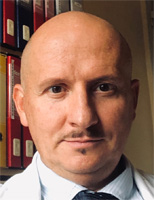Cell And Gene Start-Ups Need "CDMO 2.0"

By Louis Garguilo, Chief Editor, Outsourced Pharma

Try as I may, I can’t get Massimo Dominici to use the term “CDMO,” although that’s what we’re talking about.
At least I think that’s what we’re talking about.
Finally, he relents; instead of saying “partnerships” again, he references “CDMO 2.0” as a different breed of external organization, established to support cell and gene therapy (CGT) companies – a prelude partner before potentially utilizing larger, established CDMOs.
New Support Spin
Dominici is a professional of eminent status in the CGT field, and founder of Rigenerand, a CGT company in Modena, Italy, managed by CEO Giorgio Mari. (See part one here.)

Over the years, Dominici and Mari have taken measure of the progress the contract development and manufacturing industry has made.
Impressive it has been, yes, but that flows predominantly to what’s been accomplished for the small-molecule and then biologics industries. Not so much (at least not yet) for the CGT space.
Outsourced Pharma has documented how CDMOs today may not mesh with CGT pursuits, where practically every program is “novel” to some degree; there’s limited a priori knowledge or experienced professionals; differing schedules, equipment, and pricing needs; batches are minimal and intermittent; and CDMOs have grown larger while biopharma customers are more virtual and lean.
In one sense, to overcome these challenges, Dominici (who maintains his position as fulltime professor at University of Modena and Reggio Emilia) wants to backpedal to a simpler time when smaller shops focused on specific skill sets and capabilities, and weren’t in “one-stop-shop” mentalities.
But his new iteration of that focused CDMO eclipses those earlier service providers in the areas of a peer-to-peer mentoring, and sharing of developing knowledge and knowhow.
This new-breed service provider can materialize in a familiar form to Outsourced Pharma readers – a drug-developing and service-providing hybrid organization. I’ve even taken to naming this, as a “Biopharma CDMO.” (Also see here.)
But here’s what’s new: A more vigorous, utopian vision assigned to this model by Dominici.
He believes if you are out in front of the field of CGT development, why not establish a path to help bring others in the industry along with you?
It’s a business model Dominici presents in terms of “everyone pitching in to help the field mature faster, stronger, and more productively than at current trajectories, and ultimately on behalf of patients.”
In the meantime: Why not help fund your own development programs with the proceeds from providing such “partnering”?
Back To The Need
Dominici explains that emerging companies most of all need knowledge support, and thus a “new sort of consultancy partnership focused on process development and advice-giving, not just CDMO contracts for services.”
Today for CGT, neither the knowledgeable, skilled workers nor business models, which we’ll get to in a moment, actually reside at CDMOs, as they do for small molecule and biologics.
As for the growing expertise base, it still resides within the CGT companies leading the way in the sector.
Thus a company like Rigenerand, having gained insights while pursuing its own programs since its inception in 2016, can chisel out an authentic support model in which like-minded companies can access that knowledge and tutoring.
“Current CDMO contracts and pricing assigned to standard RFPs for services for small molecule or biologic production cannot be applied to emerging gene and cell therapy,” says Dominici.
“Instead,” he says, “you need partnerships providing access to current expertise that can better translate your early ideas into early clinical phases, accomplish things such as consolidating your processes so they are faster, more robust and cheaper. This is the real expertise required to jump start the industry today.”
“A company like ours can provide this expertise because we have been challenged by our own products,” he continues. “That’s the type of expertise we are willing to use to help others. We come before relationships with bigger CDMOs.
“Once you receive this consulting on the process, the focus on problem solving, and you fix the type of challenges that have not been addressed in the past even with commercial products, you can go on to take full advantage of that large-scale manufacturing capacity.”
Dominici believes that in the past, big-company cell-and-gene pioneers – “the Novartis’s and others” – started out looking for large-scale manufacturing. “But their technology needed evolving, even after products appeared on markets. They needed more efficiency in manufacturing.”
“This is where a CDMO 2.0 could have added value,” says Dominici.
“I am not talking strictly about ‘business opportunity’ here. We want to help. I'm talking about a new way to create industry partnerships to improve CGT technology, to move us safely and efficiently into GMP environments.”
Final Comradery
I’ll buy into the industry bonhomie and cooperative comradery Dominici (and some others) say the cell-and-gene industry needs to turn dreams into future drugs and therapies.
It does appear today’s CDMOs are of less help than required.
But is the Biopharma CDMO – or CDMO 2.0 – the model for accomplishing this?
Readers, what do you think?
For one thing, financial and operational focus needs to be maintained when developing a drug or therapy. And competitive advantages need to be maintained as well.
“I’ll answer by saying there is a need for this type of communication and assistance within the industry,” says Dominici.
“If we are all aware of this need we have at these early phases of development, then I think everybody will be more relaxed with these models, and in collectively facing challenges with a partner like a “CDMO 2.0’ to improve.”
“So why don't we take advantage of this, and take on challenges to make our programs better, faster, more productively manufactured, and look for new ideas on tissue cultures, reagents, etc.
“It would be the CDMO 2.0’s responsibility to take all these and put it together, like in a kitchen. This is the concept that we have.”
